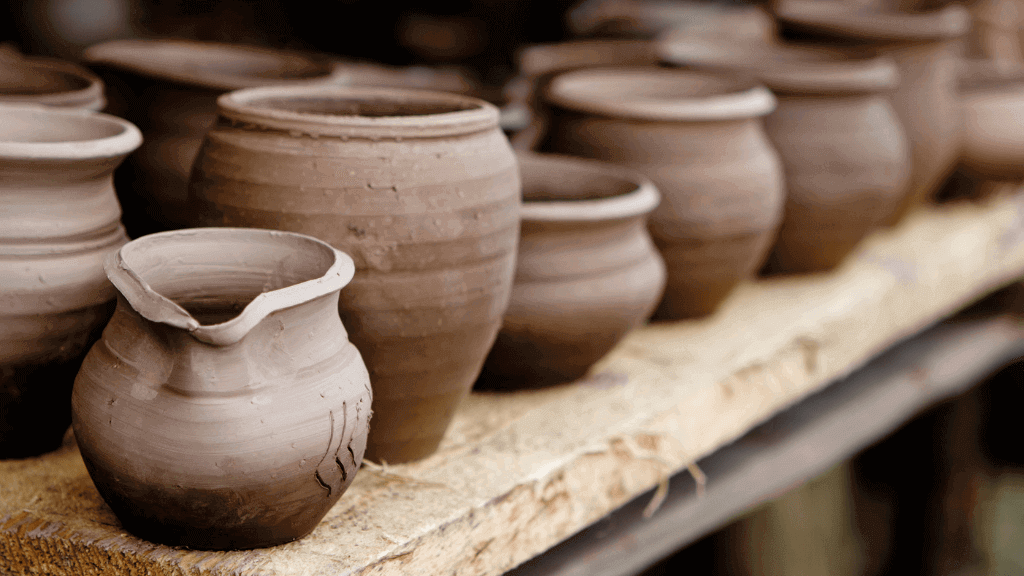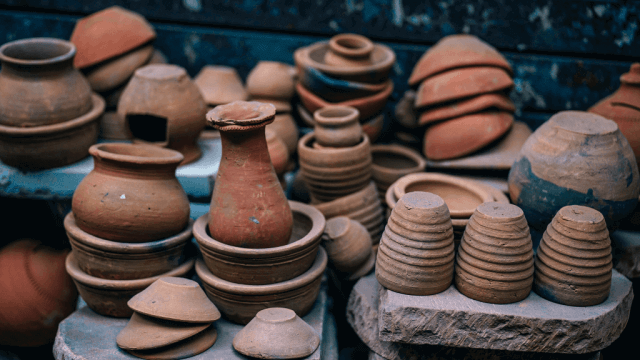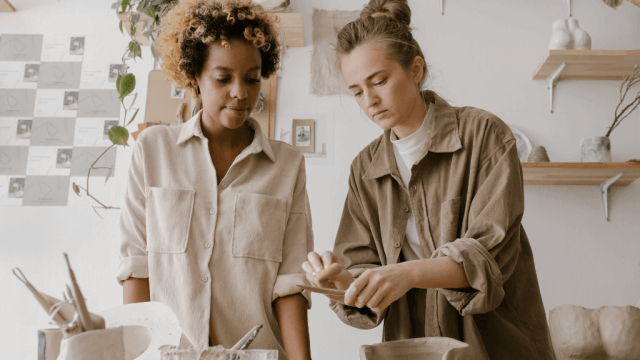It is possible to glaze pottery without a kiln, though the process is more involved, and the pieces may not be food-safe or waterproof. Certain glazes that do not require extreme heat can be used, and raku firing is one option for glazing clay pots without a kiln. The article “How to Glaze Pottery at Home – With or Without a Kiln” overviews the available methods.
What are the alternative methods to glaze pottery without using a kiln?
Several alternative methods to glaze pottery without using a kiln include pit firing, decorating with a glaze-like alternative, and raku firing. Pit firing is the earliest method of firing pottery and can produce unique results. Decorating with a glaze-like choice is another option that does not require a kiln. Raku firing is more complicated but can be used to glaze pottery without a kiln. Finally, pit firing in an outdoor location can also be used to fire and glaze pottery without a kiln.
Are there any downsides to glazing pottery without a kiln, such as reduced durability or color vibrancy?
Glazing pottery without a kiln can reduce durability and color vibrancy compared to glazed pottery fired in a kiln. Glazes are made from silica, alumina, and other colorants, and when applied to pottery, they can increase its durability and enhance its decorative qualities. However, there are alternatives to ceramic glaze that do not require high temperatures for application.
Can beginners without access to a kiln still achieve a satisfactory glaze finish on their pottery?
Beginners who need access to a kiln can still achieve a satisfactory glaze finish on their pottery by using glaze-like alternatives or small domestic pottery kilns. Pit firing is also an option, although it can lead to a more fragile finished piece or uneven glazing. If you would like more information on how to glaze pottery, please refer to step-by-step guides that cover traditional and DIY kilns, different types of glazes, and their uses.
How does glazing pottery without a kiln differ from traditional kiln glazing?
Glazing pottery without a kiln differs from traditional kiln glazing in that the process is much more involved. Without a kiln, potters must create a bisque fire, the formal name given to the first firing of pottery before it is glazed. This step-by-step guide covers how to glaze ceramics in a traditional and DIY kiln, along with different types of glazes and their uses. The ingredients in glazes melt when the kiln is hot and then harden when the kiln cools.
Are there any safety concerns or precautions to take when glazing pottery without a kiln?
Safety precautions should be taken to ensure the clay and glaze are food-safe when glazing pottery without a kiln. Additionally, it is vital to ensure the clay does not contain plaster chips and that the glazed surfaces are not crazed, blistered, underfed, or otherwise defective.











